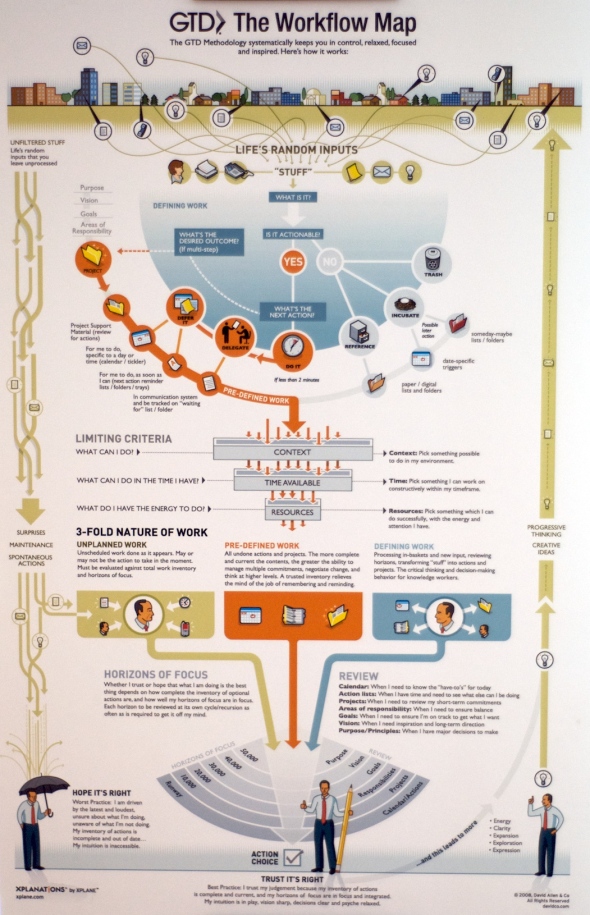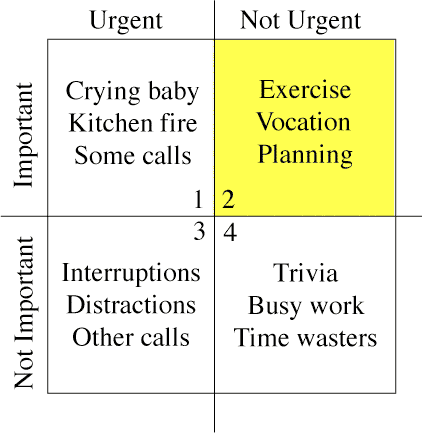BHAG or be SMART, Creatives? The Answer is Yes
31January 12, 2015 by Paula Reed Nancarrow

Janus Watercolor by Tony Grist
There are a lot of acronyms floating around in the nonprofit universe in which I work.
Some of them come from the corporate world, in which I also once worked. In January, that two-faced month which looks both backwards and forwards, goal-setting acronyms can easily creep into people’s personal lives. In my last post, I used one myself: BHAG.
BHAG stands for “Big Hairy Audacious Goal.” It comes from Built to Last, a 1994 business book by James Collins and Jerry Porras. A BHAG is a visionary goal that is emotionally compelling and challenging enough to stimulate people to work toward it. Nothing is too hard, problematic or risky if the BHAG is genuinely worthwhile.
My BHAG is to be a Time Lord.

Yes, I also said I wanted a crèche, but…
OK, so I haven’t watched Dr. Who regularly since Colin Baker had curls, but who doesn’t want to be able to move backwards and forwards in time in a contraption that is bigger on the inside than it is on the outside? Who doesn’t want a life that is bigger on the inside than it is on the outside?
Let’s face it. Every creative with a day job wants this. Still, it is hardly the sort of thing one resolves to do.
So perhaps I should focus on that other goal-setting acronym, the SMART one.
SMART goals must be Specific, Measurable, Achievable, Relevant, and Timed to be met by a certain date. In truth, for individuals as well as organizations, the two ideas work best together. If you don’t dream big or tackle difficult problems with daring – real or assumed – it doesn’t really matter how many SMART goals you achieve, because they aren’t going anywhere, and neither are you. Sociologist William Bruce Cameron said it best: “Not everything that can be counted counts, and not everything that counts can be counted.”
This is the problem I have with a lot of time management tools aimed at increasing productivity. There’s too much emphasis on on squeezing as much as possible into each day, using every waking moment as efficiently as possible.
It’s rather exhausting.

Buster Keaton in The General – Or My Typical Work Week
And yet I still find time management and productivity tools very seductive.
With David Allen’s Getting Things Done, the explicit promise is “stress-free” productivity.
Collect all your tasks in one place, then process, organize, plan, and do them. I worked the GTD system for years, and it has much to recommend it; but as many other people have noted, it is easy to get so obsessive about collection and categorizing and breaking things down into actionable steps that the system itself becomes overwhelming.

Now isn’t this relaxing?
It also works best for executives who have people they can delegate tasks to. I don’t have people. Note that the only woman on this workflow chart is the Executive Assistant. She’s part of the collection process.
Steven Covey’s First Things First, co-authored with A. Roger and Rebecca R. Merrill, proved to have more lasting value for me.
Though I still found myself uncomfortable with the roles Rebecca Merrill was called on to embody on behalf of all women. Still, it was through First Things First that I identified the core values of my life and learned to evaluate whether or not I was spending my time in ways that reflected those values. Covey’s 2×2 matrix of task classification was one I instantly recognized as true to my own experience:
Figuring out how to do more of what is important but not urgent is the real BHAG here.
The trick is to find out what sort of SMART goals would make that possible.
For that I used a lovely free time-tracking tool called Toggl. It’s elegant and actually fun to use. Though it’s particularly geared toward people and teams who are working on billable projects for different clients, I defined my “clients” as those core values I see as essential to living a wholehearted and balanced life: work, home, creativity, self, others. For a month I’ve logged how I spend my waking hours with these “clients.”
And now I have a SMART goal for 2015 as well.
To spend an average of 20 hours a week on creative work – significantly more than I’m managing now, but not, it appears, impossible.
My BHAG approves.

Courtesy Scrivle .
What about you?
Do you have a Big Hairy Audacious Goal for your creative life? Do you know what SMART goals you need to move toward your vision?



“Getting to Two” will be my new mantra. I love that four-part chart where box 2 is all the things I *want* to do but prioritize after crying baby, house on fire, client screaming, etc. I’ll work more on “getting to two.” :)
LikeLike
Emma: Responding to blog comments is getting to two for me, and usually I try to do that on the same day they were written, but this week I’m been mostly stuck in 1 – though I have neither crying baby nor house these days. I think getting to two is a fine, fine goal. ;-)
LikeLiked by 1 person
Interesting ours seemingly endless efforts to get more organised. I agree that these can sometimes be about treating ourselves like machines, squeezing a little more out each time. Charli Mills has an interesting alternative to SMART objectives in the FAST acronym (that’s with flexible, which I think is key) http://carrotranch.com/2015/01/08/january-7-flash-fiction-challenge/
Good look with your big hairy goal!
LikeLike
You were quite right, Anne. Charli’s post was great. And now my goal is to get myself to work on time…
LikeLike
I’ve learned not to have those BHAGs via the SOHKs – school of hard knocks! Best of luck with all your goals, small or large!
LikeLike
Ah, the SOHK. I never learn anything there (sigh)… Thanks for the luck, Jan, I’m sure I’ll need all I can get!
LikeLike
We swim in a sea of acronyms, don’t we? I’ve used Logic Models and SWOT, as well as SMART and the URGENT/IMPORTANT Matrix–Eisenhower used a version of that matrix, but is also famous for his quip that “Plans are worthless, but planning is indispensable.” So, I suppose the takeaway from your great piece is that virtue resides in the process of trying–whether or not we actually realize the goals we set. Thanks for the thoughtful post.
LikeLike
Yes, it is a sea of alphabet soup. Thank you for the Eisenhower quip – I know I have heard it – every time I’m in an organization that goes through strategic planning, but wasn’t sure who said it. I’m glad you had a takeaway, Anna.
LikeLike
Reading your post makes me want my BHAG to be learning to use good pictures and gifs in my posts. You always use such great ones!
LikeLike
Thanks Ariel. That’s one way, for better or worse, that Twitter has shaped my blog posts. I like to have six different lede lines to tweet, with accompanying pictures; that also makes it super easy to find my posts in the stream and track who is retweeting them so I can reciprocate. It started out as a promotional thing, but now I’ve really gotten into it for its own sake; I think that’s my frustrated visual artist finally coming out to play.
LikeLike
I chuckled at all of your illustrations, Paula. Loved it! Your point is a viable one, and I’m glad your system works.
Mine is something like this: Weekly goals, Daily goals, then Time Increments. I outline the weekly goals the night before a week starts, I re-evaluate daily goals (three main goals) first thing every morning and then at the end of the day, noting what was accomplished and possibly re-considering breaking up something that has to be sanctioned into smaller goals for the remainder of the week-as you say in your post, what is “Urgent.” Finally, as the workflow for each day ensues, I’ve incorporated a new “Howler” timer app that I designate for keeping track of “time increments” such as: “outlined chapter one in 30 mins” or “folded laundry in 15 mins” or “took dog for 15 walk around the neighborhood.”
Your post was great and I agree that URGENT must be defined to ultimately not be stressed during productivity. I “get” how those workflow charts become a stress within themselves. I’m like you in wanting a more reasonable approach to individual goals. Nothing good come from stress!
LikeLike
Wow, Laurie, I’m impressed. That’s quite the system. I’ve not used a Howler timer before, and had to look that up. Anne’s link in the comment above to Charli Mills’ post also has some interesting ideas for setting goals for writers.
LikeLike
Love this post. At one time I spent so much time chasing personal development “strategies” that I ran out of time for personal development. Having found one that works best for you is awesome.
I know habits are the key. Why do I resist structure like a kid resists brussel sprouts? Once I answer this – I’ll turn into a time lord.
LikeLike
I think there are things to be said for resisting structure. Especially if you are a creative. Brenda Ueland agrees with me. “So you see, imagination needs moodling – long, inefficient, happy idling, dawdling and puttering.” Therefore, permission granted. ;-)
LikeLike
I’m here through the #MondayBlogs tag on Twitter and have been meaning to comment since the 12th. This post is helping me evaluate my methods for achieving my creative goals this year. I’m failing so far, and it’s frustrating, even keeping in mind that a component of my overarching goal is to experiment with various time management methods to find what works best for me. I love the idea of a BHAG goal! That particular piece of terminology helped crystalize some things for me. Thanks for posting! I’m glad I clicked through.
LikeLike
Thank you so much Kate. I’ve been meaning to reply since the 14th! I’m very glad to see that it prompted a post of your own as well.
LikeLike
[…] pop up in my Twitter feed is #MondayBlogs, and one of the posts that caught my eye on Monday was BHAG or be SMART, Creatives? The Answer is Yes by Paula Reed Nancarrow. Like so many other people, I sat down and came up with resolutions and […]
LikeLike
Now I feel bloggy famous. Thank you, Kate. And experimental as well, because I have no idea if this comment is going to show up on your blog as well as mine. Am about to trip over to your blog and find out!
LikeLike
Thanks for sharing this Paula. It’s always great to hear how others organise and manage their goals, giving a little more to think about and a few possible strategies. Twenty hours a week for creative stuff sounds amazing. Best wishes for achieving what you desire. :)
LikeLike
Well, Norah, I got in 26 last week – but only by neglecting my blog comments, and other people’s blogs. Which isn’t acceptable. So we’ll have to figure out another solution. ;-)
LikeLiked by 1 person
Increase the number of hours in the day!?
LikeLike
Lord, I’ve always been happy with myself when I make lists and sort of stick to them. You leave me in your dust. I hope you get your 20 hours a week. Good luck!
LikeLike
Oh dear. Dust. That creates chores on my homemaking list. As I told Norah, I did manage to get in those 20 hours last week, but it was at the expense of other things like matter, like timely responses to blog comments. Thanks for stopping by Judy.
LikeLike
I’m not allergic to dust, so it can wait if I’m having a good day writing:)
LikeLike
Reblogged this on YOURS IN STORYTELLING… and commented:
So – what is YOUR Big Hairy Audacious Goal?
LikeLike
Thanks for sharing my BHAG on your blog, Steve. Much appreciated.
LikeLike
[…] Source: paulareednancarrow.com […]
LikeLike
Thanks for sharing my post, Fred!
LikeLike
[…] you read this blog – and I hope you do – you know I’ve committed to 20 hours of creative work a week in […]
LikeLike
[…] a goal for creative practice seemed a good way of being intentional about something I value. My target was an average of 20 hours a […]
LikeLike
[…] January, as people are wont to do, I set a reach goal for the […]
LikeLike